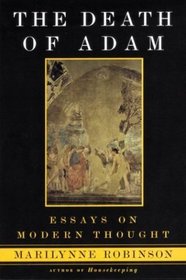The Calvary Road
 Published in 1950, this little book has enjoyed a steady readership for almost 60 years. Just today, I discovered that it’s available in several locations online as an e-text. It’s been on my shelf for — oh, probably 10 years. They talked about it quite a bit at the church we attended till 2 years ago, and it seemed like a good title for Easter Week.
Published in 1950, this little book has enjoyed a steady readership for almost 60 years. Just today, I discovered that it’s available in several locations online as an e-text. It’s been on my shelf for — oh, probably 10 years. They talked about it quite a bit at the church we attended till 2 years ago, and it seemed like a good title for Easter Week.
The text is only 115 pages long, but I found it very challenging. As a bonus, my edition has an extended 25-page interview with the author from 1988. The whole book went by quickly, but not without reaching out several times, grabbing my chin, and saying, “Pay attention!” To borrow the author’s phrase, it “puts into simple pictorial language the great truths of sanctification.”
Rev. Roy Hession was a British-born evangelist whose life and ministry changed dramatically after an encounter with some missionaries who shared with him their experience with the East Africa revival in 1947. Already an evangelist, Rev. Hession had gone stale, but his time with the missionaries sent him off in a new direction from which he never departed until his death in 1992.
He refers to that direction as “continuous personal revival.” My denomination would call it holiness. He presents it with great clarity and economy, beginning with the concept of brokenness:
To be broken is the beginning of revival. It is painful, it is humiliating, but it is the only way. It is being ‘Not I, but Christ,” and a ‘C‘ is a bent ‘I.’ The Lord Jesus cannot live in us fully and reveal Himself through us until the proud self within us is broken.
How does he define “the proud self”?
- The person who “tries” to live the Christian life (”the word ‘try’ indicates that self has the responsibility,” he points out)
- Often it’s the one doing Christian work
- The one who’s irritable and envious and resentful and unyielding in its attitudes to others
- The one who is shy and self-conscious and reserved (uh-oh!)
So you see what I mean by challenging. The book proceeds through a series of chapters that focus on pictures of aspects of the spiritual journey: cups running over, the way of fellowship, the highway of holiness, the dove and the lamb, revival in the home, the mote and the beam, the servant, the blood of the lamb, and protesting our innocence.
At first I didn’t think I was going to like it, for two reasons: first, that word “brokenness” was a mantra at our old church, but its meaning had morphed from the “broken and contrite heart” and the “bent I” of this book into the idea of personal woundedness through the experiences of life. The focus on the latter slips quickly into self-preoccupation and perpetual need, rather than the holy life or the victorious life. But this book doesn’t go there. Second, I reacted negatively to this passage early on:
Jesus was willing to become… a worm and no man. And He did so, because that is what He saw us to be, worms having forfeited all rights by our sin, except to deserve hell. And he now calls us to take our rightful place as worms for Him and with Him.
Total depravity the way R.C. Sproul described it didn’t mean utter depravity — utter corruption and disfigurement by sin. It just meant that there was no part of us that is not touched by our sin. But the worm image here just rubbed me the wrong way. It’s to the book’s credit that it won me over after that!
My favorite chapters were the ones on revival in the home, and the mote and the beam. Talking about the home, Rev. Hession reviews the goal: a Christian home should manifest the life of Christ
in fellowship and oneness with those with whom we live — nothing between us and God, and nothing between us and others.
But how different is the experience of so many of us professing Christians in our homes — little irritations, frayed tempers, selfishness and little resentments; and even where there is nothing very definitely wrong between us, just not that complete oneness and fellowship that ought to characterize Christians living together.
His discussion of how exactly to put holy living into practice is one of the clearest I’ve ever read. But in this chapter it raised some questions for me too. For instance, he writes, “We shall have to accept another’s ways and doings as God’s will for us and meekly bend the neck to all God’s providences. That does not mean that we must accept another’s selfishness as God’s will for him – far from it — but only as God’s will for us.”
Seems to me that there are some reasonable boundaries one could put around that — when “another’s selfishness” leads to physical harm in a marriage, obviously, but also maybe in some other ways. Are there times when “meekly bending the neck” is not love for the other person? Though you can see Jesus “bending the neck” very clearly at his death, what about his hard words to the Pharisees in the three years up to that? “Bending the neck” can’t mean refusing to confront, or to speak difficult truth.
The chapter on the mote and the beam raised a point I’d never noticed before. That passage isn’t about not ever judging others; it ends by pointing out that once you’ve removed the beam from your own eye, you can better see to take out the mote in the other person’s. A godly fellowship is full of people taking the motes out of each others’ eyes. “I suggest,” writes Rev. Hession, “that the beam in our eye is simply our unloving reaction to the other man’s mote.” I’d never thought of that before.
This is a ridiculously long post, but what can I say? I liked the book and recommend it for anyone who comes to it under these conditions, spelled out by the author:
He must come to [these pages] with a deep hunger of heart. He must be possessed with a dissatisfaction of the state of the church in general and himself in particular — especially of himself.


